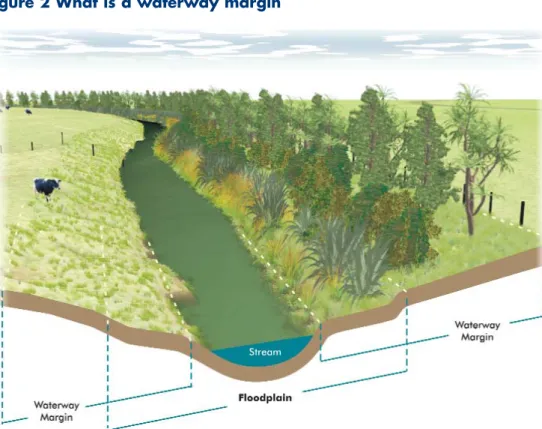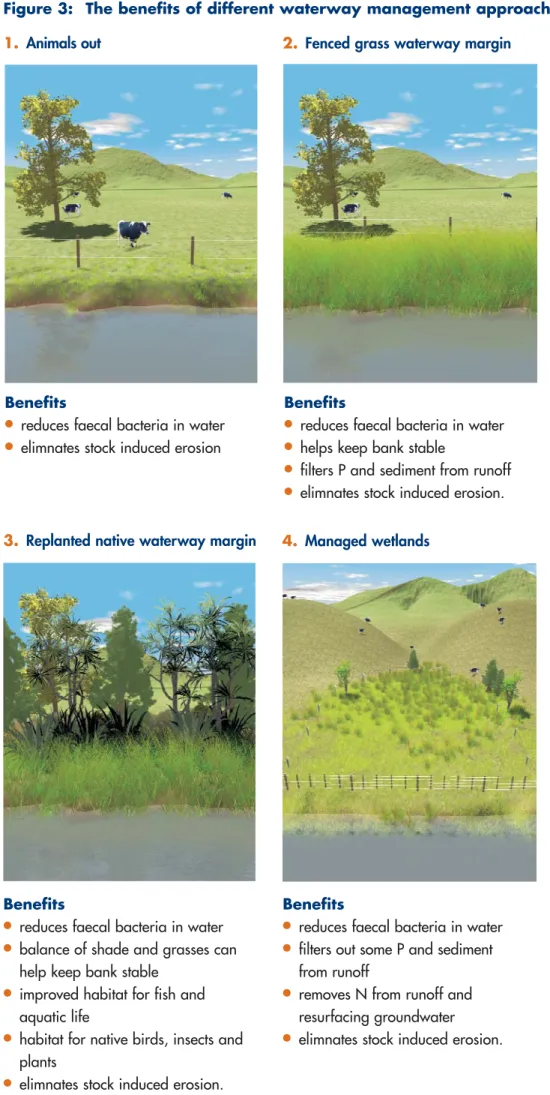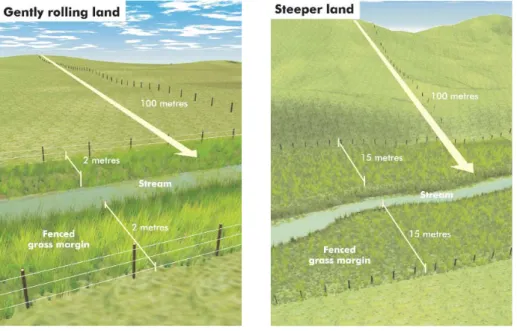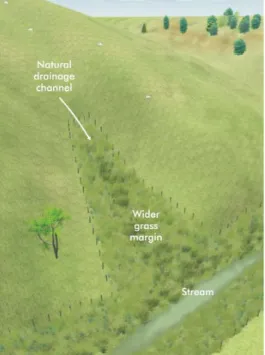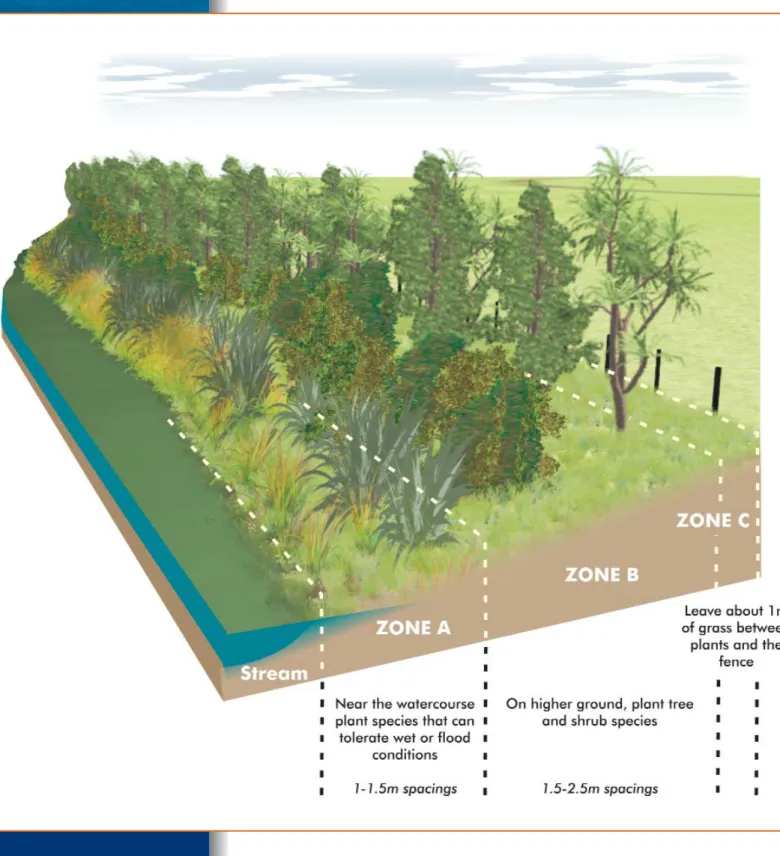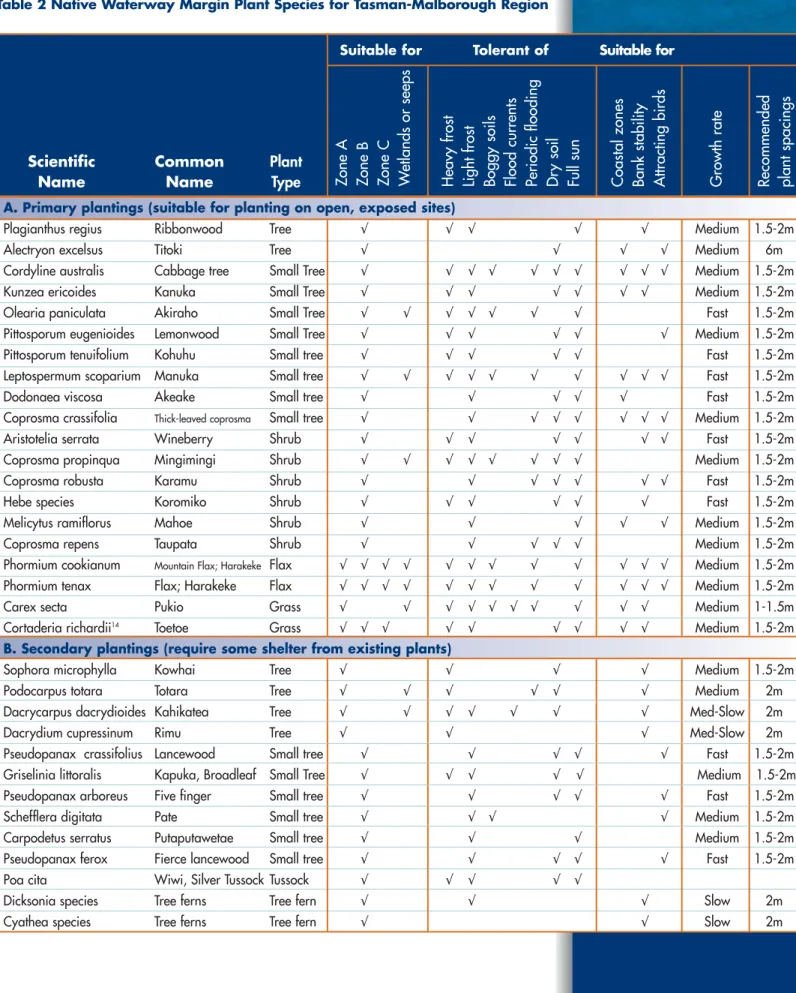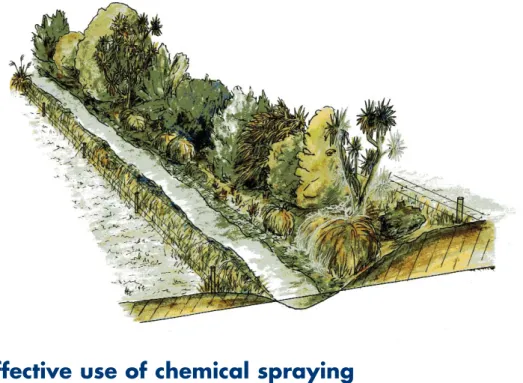If caring for your farm business and your local environment is important to you, it may be time to consider managing your waterways. Well-managed waterway boundaries can help you meet market demands, improve your farm and stock management, and protect future water quality and freshwater life. This booklet provides information on how to manage waterways to improve water quality, freshwater longevity and bank stability, and to improve your farm.
There are several different approaches you can take, depending on budget, the type of stream on your farm and your individual farm and environmental goals. There are several options for managing waterways, and you can choose what suits your resources and goals. One of the first steps towards better waterways on your farm is to understand more about how farming can affect them.
Well-managed waterway margins are the last opportunity to keep pollution out of our waterways. Well-managed waterway margins offer the last opportunity to keep farm pollution out of waterways. For more information on management practices to improve environmental outcomes on your farm, ask your farm advisor, or contact Tasman District Council at
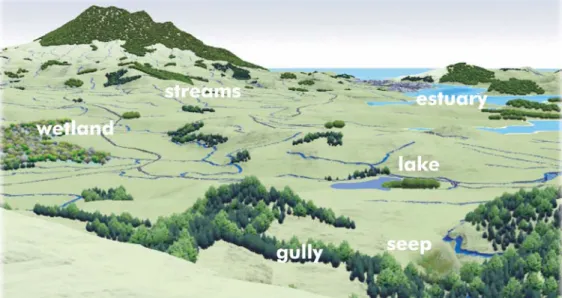
Four key approaches
Replanted native waterway margin
Animals out 2. Fenced grass waterway margin
Managed wetlands
Developing a plan for action
What will it achieve?
Deciding where to put your fence
What sort of fence is best?
In areas where livestock will have to cross a river, stream or drain, a permanent livestock crossing is best. Sometimes you may need to use machinery to clear weeds, silt or debris from drainage channels. An electric fence can be dropped or removed to allow access, but with a larger fence you may need to leave enough space between the bank edge and the fence for machinery to operate.
It may be sufficient to do this only on one side of the channel rather than both. Remember that you may need a resource consent from your District Council to carry out work in a waterway – this is to ensure that damage to the stream bed and freshwater life is minimal. Simple one- to two-wire electric fences are less likely to collect flood debris and are therefore swept away in floods.
For growers who opt for seven to nine post and batten wires, flooding can cause costly damage. Where there is a possibility of flooding, it is best to place the fence further away from the waterway. This is especially important on the outer bends of rivers and streams, where the possibility of erosion is greatest.
When locating the fence, consider where the height of the bottom wire is in relation to expected flood levels. After large floods, it can be useful to record the flood height to assist in the placement of waterway fences in the future. A two- to three-wire electric fence with permanent posts can be a good option for fencing off waterways.
Making temporary fencing work for you
Managing waterways without fences
Stock watering options
What can grass margins achieve?
Where is a fenced grass margin most important?
Management to get the most from your margin
Narrow strips of grass that occur where a fence is placed very close to a waterway are unlikely to provide much filtering benefit.
Grazing to maintain effectiveness and manage weeds
What’s the problem?
Stock crossings are good for business
Looking at the options
Getting culverts right
Building sound bridges
Rules for stream crossings
What are the benefits?
Plan well to meet your goals
6 For the purposes of this booklet, planting your waterway margins involves the re-establishment of native grasses, shrubs and trees in a fenced strip of at least five meters wide. Shade keeps water temperatures low for stream life and prevents troublesome aquatic weeds and algae from growing. Research11 indicates that if you want to replant your stream bank with natives, but want to keep your bank stable, it is important to maintain a good cover of grasses on the bank edge.
If you plant too densely, it can shade out the native grasses and cereals at the edge of your bank, which often do most to keep the bank up. Restoration of natural vegetation with maximum shade for stream life is likely to result in the channel widening and becoming shallower over a period of up to 20 years. Researchers estimate that 50 to 70 percent shade occurs where your combined width and vegetation height is approximately equal to the width of the stream channel12.
If restoration is your top priority, you want minimal weed control and maintenance, and you are willing to accept initial erosion, then dense plantings that provide up to 90 percent shade for the stream will create conditions close to native forest. Make sure you plant far enough back from the canal to allow for the erosion that is likely before your trees are well established. Be sure to avoid invasive spreading species such as crack, gray and weeping willow trees, silver poplar and all non-sterile tree and shrub willows.
When replanting stream banks, consider the shade effect on grasses and sedges that stabilize fragile bank edges. This ensures that the second tree prevents the bank from being washed away by the current that is diverted from the roots of the first. If you intend to occasionally graze around the trees when they are older, use "Netlon" or "Dynex".
If you want to build a water quality filter into your replanted margin to handle surface runoff, you must include a grass or screen strip at least one meter wide on the roadside. If you have decided to plant your waterway margin, this section provides you with practical advice on how to go about it, including when, how and what to plant where.
Prepare a planting plan
What to plant where
Good timing
Getting the site ready
Alternatively, drill holes in the base of each willow at a 45° angle and inject 80 ml. Avoid placing live willow cuttings in or near watercourses, as they will root and grow – and you'll end up back to square one. If you want to remove vegetation along the edges of waterways in the Tasman District, contact the Tasman District Council to find out if you need a resource consent.
They can advise on how best to reduce the amount of sediment and vegetation that ends up in the waterway so as not to restrict water flow and affect fish passage.
Pest control
Getting your plants in the ground
Ongoing maintenance
Weed Control
A fence post makes a good home for a possum bait station. It is generally best to contact your county council's biosecurity officer for the site. It's a good idea to get advice before you start so you can design and implement the right weed control program for the job. It is important to protect your waterway edges (and your investment in them) from animal pests as well.
Planting larger trees will reduce the impact that rabbits and hares will have, but constant monitoring is important for smaller plants. Rabbits should be controlled until the growing tops of the seedlings are above bite height. If rabbits are a problem in your area, control is necessary until the diameter of the plant stems is large enough to prevent them from nibbling or barking.
It may be helpful to try animal repellants to deter rabbits and hares - these are available from gardening suppliers or farm supply stores or you can make your own. Baiting stations for possums (and rabbits) can be an effective low-input control method at waterway borders. Traps are higher maintenance, but once you buy them the only cost is your job.
Goats can make short work of lush young plantings and they will get through most fences. Controlling rats, mice, stoats, ferrets and cats will help keep your plant a healthy habitat for them. Most of these pests can be targeted with certain toxins, but each requires a different capture method if toxins are not used.
Talk to biosecurity staff at Tasman or Marlborough District Council for advice on pest control methods that suit your situation. Both Tasman District Council and Marlborough District Council encourage owners of wetlands on their properties to consider protecting and restoring these areas as important natural habitats.
What can managing wetlands achieve?
Fish and Game New Zealand, Department of Conservation, Landcare Trust and the Tasman Environmental Trust may also be able to help with advice and financial assistance for protecting wetlands.
Where is wetland management most important?
To drain or not to drain…
Managing your natural filters
Using temporary fencing as a management tool
The many roles of a farm drain
Water weeds have good points 16
Managing drains to reduce maintenance
Reducing the impact of mechanical drain clearing
Creating a V-shaped channel 18
Effective use of chemical spraying
Contact Tasman or Marlborough District Council for assistance and site-specific advice on the best ways to improve your farm's waterways. Innovation and adaptability are the hallmarks of New Zealand farmers, so enjoy working the information in this booklet to suit your special corner of Tasman or Marlborough. Farmers across Tasman, Marlborough and New Zealand are considering how best to manage the waterways on their farms, to ensure they comply with regional council rules, new industry guidelines and.
And don't forget to ask for help when you need it - contact Tasman District Council or Marlborough District Council. They can provide you with site-specific advice and assistance in maintaining clean streams in your patch. If you live in the Tasman District, you may be eligible for financial assistance to fence and plant waterways through the Tasman District Council's Rivers and Streams Management Fund.
Marlborough District Council is currently investigating options for providing financial assistance to farmers who want to fence and plant their waterways. There are also other organizations and grants that may be able to provide financial assistance.
Will you need fences?
What about plants?
Other costs you might need to consider
Australian and New Zealand Environment and Conservation Council, and Australian and New Zealand Agriculture and Resources Stewardship Council, 2000: Australian and New Zealand Guidelines for Fresh and Marine Water Quality. Collier KJ, Cooper AB, Davies-Colley RJ, Rutherford JC, Smith CM and Williamson RB, 1995: Riparian zone management: A contribution to the protection of New Zealand's rivers and streams. Davies-Colley RJ, Nagels, JW, Donnison, AM and Muirhead, RW, 2001: Faecal pollution of rural streams – Implications for water quality monitoring and riparian management.
Environment Canterbury, unpublished report 2001: Comments on water quality analysis of Cust Main Drain stock crossing from Bradshaw dairy herd, October 2001. Department of the Environment, 2001: Managing Waterways on Farms: A guide to sustainable water and riparian management in rural New Zealand Zealand .
